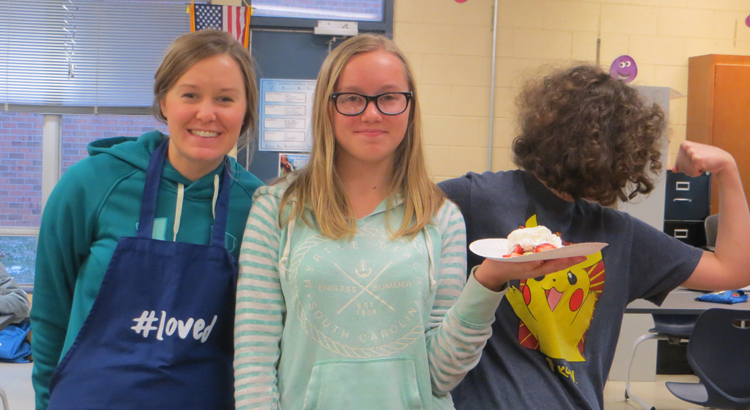This is part of a series of posts from nominees and nominators for our LifeChanger of the Year educator recognition program. We meet scores of fascinating LifeChangers every year who have interesting perspectives to share about children, education and life.
A little praise goes a long way at school.
I’ve concluded that incorporating positive reinforcement into the classroom as an effective educator is essential for three reasons.
First, it boosts student engagement and buy-in to what you are teaching because they associate a positive reward with you and the material you are teaching.
Second, students will feel safe and cared for in the learning environment which will increase their productivity and ability to learn because of that security they feel.
Third, the teacher experiences a positive interaction with a student and most likely enjoys giving positive rewards and accolades to students rather than negative corrections. So, the teacher enjoys their job and becomes more productive and effective.
Recently, student engagement has become a familiar term and seems to be used a lot when discussing effective educating because if you can grab and keep student’s attention you will be more successful and they will have an easier time recalling the information. Positive reinforcement is one way to increase engagement. If a student receives a reward for doing a good job the chances of them continuing that engaging behavior increases. It teaches students that is a desired behavior and motivates them to continue it. For example, a timid student in my PE class was not excited to participate. But when she put her equipment away for the day I said to her, “Wow! You did a great job putting your equipment away by organizing it. I think you would make a great equipment manager. Would you like to be in charge of setting up and tearing down equipment for the rest of the semester?” She agreed and her participation in the class increased enormously because she was good at something and was contributing to the class and had a purpose.
Safety and a sense of belonging are important to a child’s learning because if they don’t feel secure they are less willing to participate in learning. That is why positive reinforcement is so important to make kids feel secure. This occurred in an instance in my class when a child volunteered to demonstrate a skill. They performed the skill and then I said, “Thank you for being so brave and willing to perform in front of your class. You took a risk and did it correctly and you serve as an example for the rest of our students. Class, please give them a round of applause.” By acknowledging their willingness to take a risk the child knew they were safe to attempt and try things because they would be rewarded with a positive reinforcement of applause and acknowledgement from their teacher and peers.
Finally, the teacher enjoyment skyrockets when they use positive reinforcement because they can focus on the good things kids are doing instead of bad things. It changes their perspective and encourages them to notice those good things and praise them more than correcting the bad ones. I know I felt this when I tried for one week to just say positive things to kids who were doing the right thing and hope kids who were doing the wrong thing would follow along. I am happy to say it worked and it relieved me of unwanted frustration and time wasted. It also created a more inviting learning atmosphere.
In summary, positive reinforcement through teacher and peer interaction boosts engagement, a sense of safety and teacher enjoyment. There are so many other benefits, too. The example of students cheering for another or the teacher providing a student with a leadership role as the equipment manager are just examples of how to incorporate positive reinforcement into your classroom. The sky’s the limit with what type of spin you want to put on it but remember it must be a part of your learning culture.
Learn more about Taylor Hawes and the educator she nominated for the LifeChanger award, Julie Gardenour, on Gardenour’s LifeChanger of the Year profile.
TC100537(0418)3

